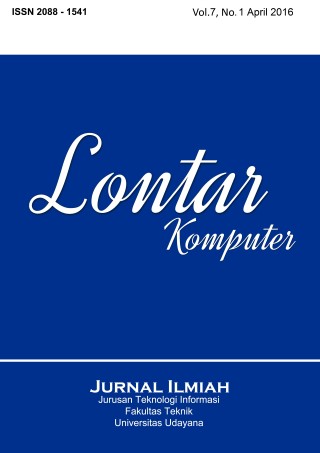Pengembangan Aplikasi Android Penghimpun Data Ekonomi Nasional Berbasis Crowdsourcing
Abstract
The right decision in national economy sector can only be obtained with excellent national economic data quality. Unfortunately, the collection process of true, accurate and complete national data is still expensive and time-consuming. Therefore, this study offers crowdsourcing as an alternative method towards the collection process of national data with low cost and dynamic. With case study basic commodity prices data collection nationwide, this method proved to empower the public as the owner of the data on self-reported commodities price in their region through an Android application, available for free on Google Play Store. This study was conducted for a year starting from January 2 to December 31, 2015. At the end of the study period, there were 7,442 people who have participated actively with an even distribution in all provinces in Indonesia. The amount of new user is 34 people per day with data entry is more than 400 data per day, and continues to increase.
Downloads
References
[2] J. Howe, How the power of the crowd is driving the future of business. 2008.
[3] Z. Matthew, G. Mark, S. Taylor, and G. Sean, “Volunteered geographic information and crowdsourcing disaster relief: a case study of the Haitian earthquake,” vol. 2, no. 2, pp. 7–33, 2010.
[4] A. Rai, K. K. Chintalapudi, V. N. Padmanabhan, and R. Sen, “Zee: Zero-Effort Crowdsourcing for Indoor Localization,” in Proceedings of the 18th annual international conference on Mobile computing and networking - Mobicom ’12, 2012, p. 293.
[5] M. Figliozzi and B. Bryan, “Evaluating the Use of Crowdsourcing as a Data Collection Method for Bicycle Performance Measures and Identification of Facility Improvement Needs,” 2015.
[6] B. Assemi, D. Schlagwein, H. Safi, and M. Mesbah, “Crowdsourcing as a method for the collection of revealed preference data,” Proc. - 9th IEEE Int. Symp. Serv. Syst. Eng. IEEE SOSE 2015, vol. 30, pp. 378–382, 2015.
[7] S. Kemp, “Digital , Social & Mobile in 2015,” We are social, no. January. pp. 1–375, 2015.
[8] K. Selvarajah, M. P. Craven, A. Massey, J. Crowe, K. Vedhara, and N. Raine-Fenning, “Native apps versus web apps: Which is best for healthcare applications?,” Lect. Notes Comput. Sci. (including Subser. Lect. Notes Artif. Intell. Lect. Notes Bioinformatics), vol. 8005 LNCS, no. PART 2, pp. 189–196, 2013.
[9] A. Charland and B. Leroux, “mobile application Development : Web vs . native,” Commun. ACM, vol. 54, pp. 0–5, 2011.
[10] Statista Inc., “Market share held by mobile operating systems in Indonesia from January 2012 to July 2015.” 2015.
[11] Android-Developers, “Platform Versions.” 2012.
[12] A. Tongaonkar, S. Dai, A. Nucci, and D. Song, Understanding mobile app usage patterns using in-app advertisements, vol. 7799 LNCS. 2013.
[13] D. Persentase, “Distribusi Persentase Penduduk menurut Provinsi, 2000-2014.” p. 2035, 2014.
Keywords
The Authors submitting a manuscript do so on the understanding that if accepted for publication, the copyright of the article shall be assigned to Jurnal Lontar Komputer as the publisher of the journal. Copyright encompasses exclusive rights to reproduce and deliver the article in all forms and media, as well as translations. The reproduction of any part of this journal (printed or online) will be allowed only with written permission from Jurnal Lontar Komputer. The Editorial Board of Jurnal Lontar Komputer makes every effort to ensure that no wrong or misleading data, opinions, or statements be published in the journal.
 This work is licensed under a Creative Commons Attribution 4.0 International License.
This work is licensed under a Creative Commons Attribution 4.0 International License.























